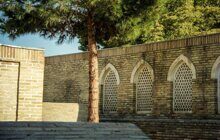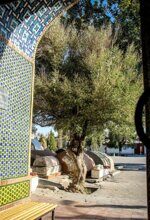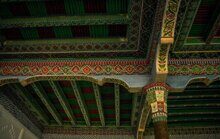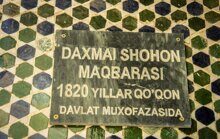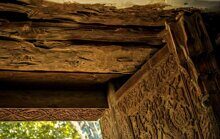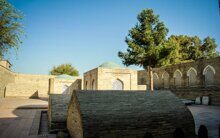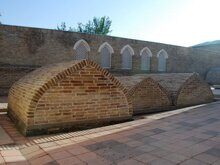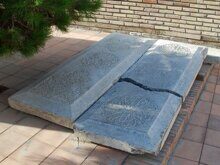Necropolis Dakhmaishakhon
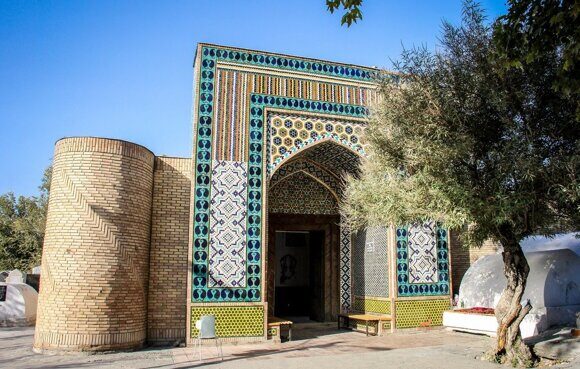 Necropolis Dahmaishakhon, a 19th—century building, contains characteristic features of the Ferghana memorial architecture. It is appropriate to note that on the basis of the ancient and generally not observed precepts of Islam, which condemns the construction of any structure made of stone or brick over graves and prohibits Muslims from praying directly over the grave, complex architectural and spatial memorial complexes called "hazira" have been developed in the Ferghana Valley. The core of such a complex is a revered burial site, which stands out with a fence, and a memorial mosque—ziarathona is being built nearby. Hazira is one of those examples in the history of medieval architecture that reflects the influence of Islam on the forms of architecture
Necropolis Dahmaishakhon, a 19th—century building, contains characteristic features of the Ferghana memorial architecture. It is appropriate to note that on the basis of the ancient and generally not observed precepts of Islam, which condemns the construction of any structure made of stone or brick over graves and prohibits Muslims from praying directly over the grave, complex architectural and spatial memorial complexes called "hazira" have been developed in the Ferghana Valley. The core of such a complex is a revered burial site, which stands out with a fence, and a memorial mosque—ziarathona is being built nearby. Hazira is one of those examples in the history of medieval architecture that reflects the influence of Islam on the forms of architecture
Hazira Dahmaishakhon (Tombstones of the Shahs) represents the family tomb of the Kokand khans, Its architectural and spatial composition consists of a grand portal-domed entrance (9.4 X 11.7 m) leading to the courtyard with graves, a two-column aivan mosque. Two-plan carved floral ornaments covering the doors, murals of the interiors and plafonds of the mosque make up the decorative decoration of the complex. The portal is decorated with mosaic patterns of geometric pattern, made of glazed tiles, where blue and blue colors prevail. The upper part of the U-shaped mosaic frame of the portal is very original, which is very similar in pattern to Ferghana fabrics for outerwear—snipe.



